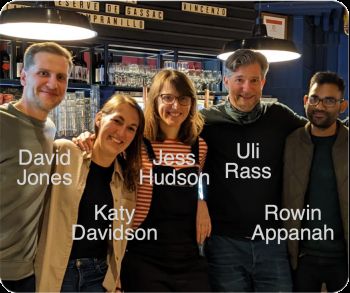Breakthrough in understanding a key genome caretaker
Posted on behalf of: Ulrich Rass - Genome Damage and Stability Centre
Last updated: Wednesday, 3 September 2025

Members of Uli Rass' research group at the GDSC and co-authors of the current study.
For 30 years, scientists have been trying to understand why DNA2 is critical for cell proliferation and how its molecular functions might relate to human disease. Uli Rass’ team, in collaboration with the research groups of Tony Carr, Keith Caldecott, and Chris Chan, now show that DNA2 is indispensable because its actions at stalled replication forks restrict homologous recombination-restarted replication across organisms from yeast to human.
Loss of this control mechanism in human cells results in persistent replication intermediates which give rise to excessive recombination-dependent DNA synthesis and lead to the accumulation of single-stranded DNA in the G2 phase of the cell cycle. This causes DNA damage checkpoint activation, invariably leading to ATR-p21-enforced cell-cycle exit into senescence. Importantly, low concentrations of DNA2, such as those found across DNA2-linked primordial dwarfism disorders, are compatible with cell proliferation, but result in stochastic cell-cycle exit. This provides a compelling rationale for the hypocellularity that underpins extreme growth failure in patients with DNA2 mutations.
The paper offers a new perspective on the interplay of the fundamental processes of DNA replication and DNA recombination. In future, it will be important to investigate whether the paradigm of recombination-induced senescence extends beyond DNA2-linked disease and contributes to other disorders caused by mutations in DNA replication genes. On the other hand, protection form recombination-mediated cell-cycle exit might explain why DNA2 is frequently over-expressed in cancer cells. This suggests that DNA2 might represent an Achilles’ heel in cancer and that its inhibition could potentially be therapeutically exploited.

